Description of "Florentina" roses and the rules for their cultivation
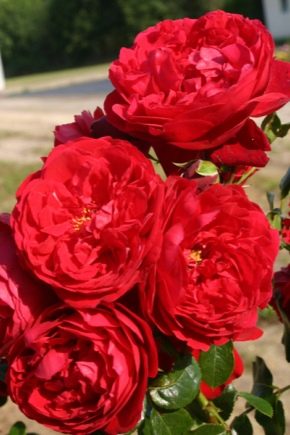
Climbing rose varieties are good not only for their attractive appearance, but also for the ability to grow them in regions with a difficult climate. For example, a frequent visitor to the gardens near Moscow is the climbing rose of the Florentina variety. This is a suitable option for those who are just starting out in gardening, as the variety does not need any special care.
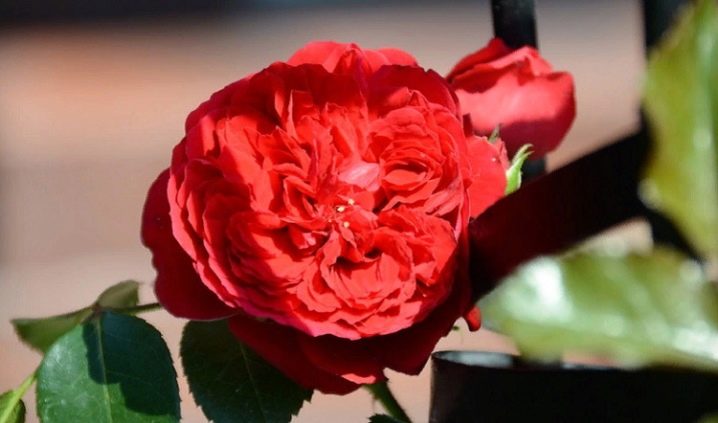
Description
The variety was bred in the famous German kennel Kordes. It differs in flowers with double dense and dense petals, the diameter of the buds is up to 11 cm, the color is bright red with a yellow middle. The height of the bush can reach two meters, there are even taller specimens, therefore, when growing this variety, it is important to periodically carry out the pruning procedure.

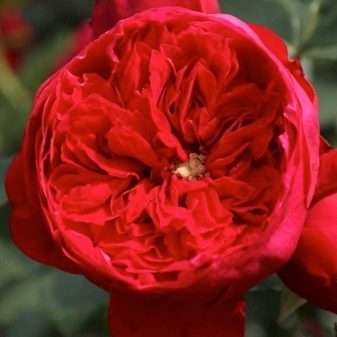
The stems are quite thick, strong, but plastic at the same time. Among the advantages of the culture, it is worth noting resistance to the most common diseases, for example, powdery mildew. In the sun, the buds do not fade, and after the rain, there are no stains on the petals. The foliage is quite dense. Flowering is very abundant and repeats several times until September. The shrub can be used as an element of garden decoration, and can be used to decorate the facades of buildings. Dense foliage and bright saturated flowers will hide all flaws on the wall of the building. You can also hide a dry tree or an old post on the site under the roses.
The disadvantages include the exactingness of the soil and the subtle aroma of flowers. The buds are very pleasantly fragrant, there is a combination of floral and fruity notes in the smell, but still it cannot be said that the aroma spreads to the entire district. It is a very light and delicate scent.
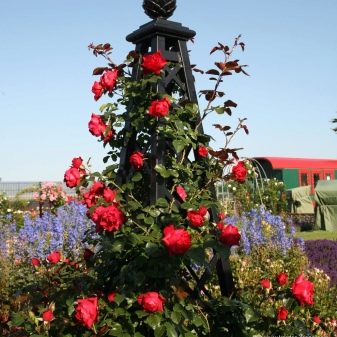
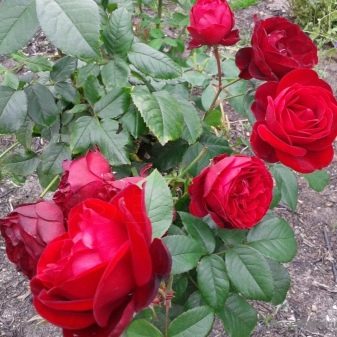
Landing
It is recommended to plant the plant in the fall, a month before freezing temperatures or in the spring after the soil warms up to +10 degrees. The Florentina variety is quite capricious in choosing a site, and therefore you need to prepare a suitable place in advance. The lawn should be well lit and ventilated, however, drafts must be excluded. Groundwater is permissible at a depth of at least one meter. It is better to choose a small slope for planting. If you plant a rose in the lowlands where water accumulates, then this will provoke the onset of diseases.
As a soil, preference should be given to loam or black soil. The composition of the soil should be slightly acidic.
At low acidity, the soil can be diluted with peat or manure, the adverse effects of highly acidic soil can be suppressed with lime or wood ash.

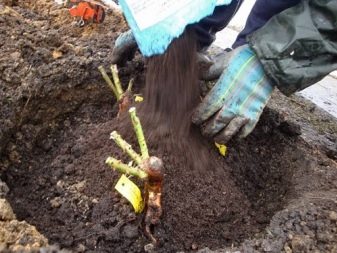
As soon as the desired area is selected, and the soil is prepared, you can proceed directly to planting. Before this, it is recommended to soak the seedlings in water for several hours.This manipulation will allow the shoot to adapt more quickly to new conditions. You can hold the sprout in the root growth stimulant solution for 3-4 hours. Next, follow these steps:
dig a hole 60 cm deep;
place pebbles or gravel at the bottom with a layer of 10 cm, they will perform a drainage function;
pour fertilizer into the pit - it is usually recommended to use compost or rotted manure;
plant a bush so that the root collar is three centimeters below the ground;
compact the soil around the seedling and water it well;
mulch the soil, peat is suitable as mulch.
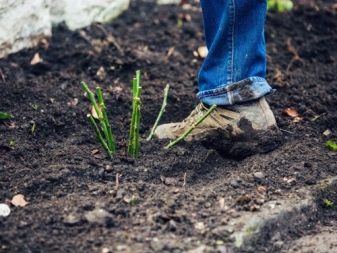
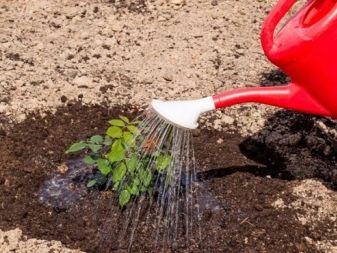
Care
The cultivation of the presented variety is not particularly difficult, but some rules need to be followed.
The soil should be loosened regularly so that the roots are provided with a drainage system and grow well.
Weeds need to be eradicated. Burning fallen leaves and branches can be an additional preventive measure against disease.
Watering is carried out twice a week, while the water should be warm and settled. In drought, the frequency of watering should be increased. At least a bucket of water is poured out at a time.
It is required to mulch the soil.
In the spring, it is recommended to feed the shrub with nitrogen-containing mixtures; in the summer it should be fertilizers that contain phosphorus and potassium.
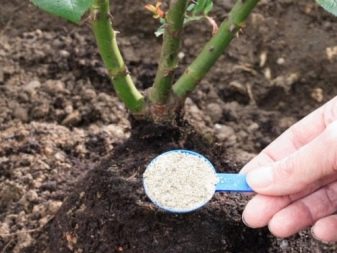
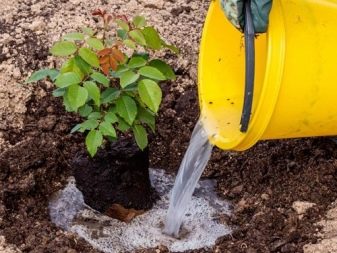
For the winter, the plant takes cover. A dense plastic film, spunbond or spruce branches are suitable as a covering material. The branches must be removed from the support and laid horizontally, but in such a way that the stems do not touch the ground.
In the spring, when the buds begin to swell, pruning is carried out. If you want abundant flowering, then the branches are cut in such a way that 5-7 buds remain on each. If you need to refresh an adult bush, then you can leave 2-3 buds. In the summertime, faded buds and dried stems are cut. Autumn pruning before wintering is carried out in the same way.
It is recommended not to allow flowering in the first year of planting, since in the following years the plant may produce a small number of small buds.
To avoid the attack of pests next to the rose, agronomists advise planting calendula, lavender or marigolds: most insects are afraid of their smell and therefore will bypass the bush. The rose itself gets along well with such "neighbors".
You can prevent fungal and viral diseases by planting garlic next to the flower bed.


Reviews
According to gardeners, the presented variety is quite unpretentious in care. Good wintering of the plant is noted, as well as its resistance to powdery mildew and black spot. Flower growers like even cupped buds, their rich, pure red color that does not go into any shades. Flowers last quite a long time and bloom very beautifully. If you compare Florentina with other varieties, then you can describe her as a magnificent sparkling lady, in contrast, for example, from a strong reliable Amadeus. Vigorous flowering is noted.
The disadvantages include a rather weak aroma. In some cases, the shoots in early spring descend somewhat from the support. There have been cases when in a cold summer the culture refused to grow, but in August it could give a dozen new shoots. This variety is considered one of the most suitable options for growing in the Moscow region.
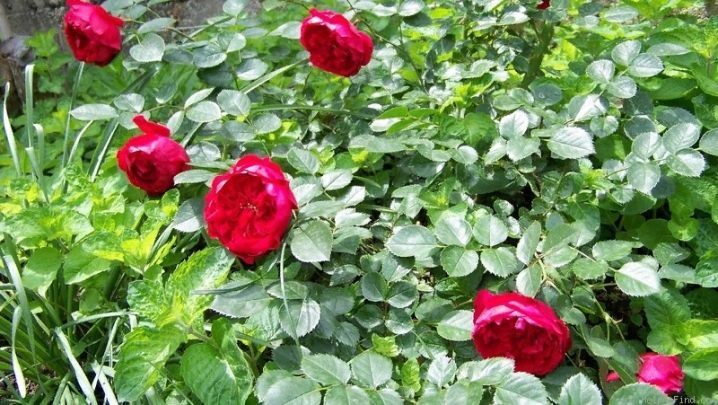
See the next video for more details.

































































































The comment was sent successfully.